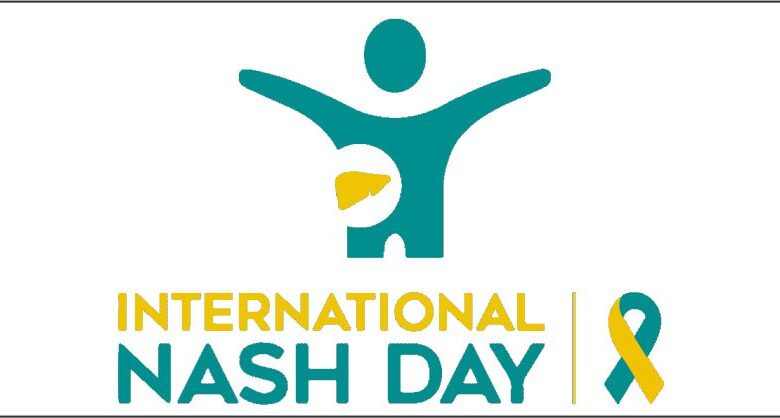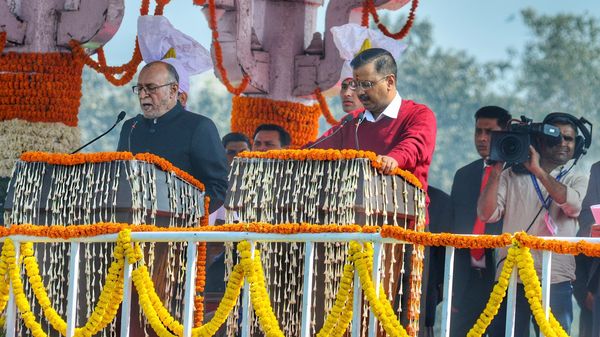Deptt. of Hepatology, PGIMER organising ‘E-Public Forum on Fatty Liver’ on the Occasion of International NASH Day-2021
On the occasion of 4th International NASH Day, the Department of Hepatology, PGIMER, Chandigarh is organizing an online ‘E-Public Forum on Fatty Liver’ on Sunday, 13th June 2021 from 7 PM to 8.15 PM. The purpose of this ‘online webinar’ is to make the public aware of ‘Fatty Liver’ and its severe form of non-alcoholic steatohepatitis (NASH). Those interested can join this webinar on their computers and mobile phones while staying at home. The registration is free and can be done online at – https://webinar365.in/Livercare-Pgimer/. In fact, registration and other details of the E-Public Forum are also available on PGIMER, the Chandigarh website. Faculty members from the department of Hepatology, PGIMER, Chandigarh will discuss all aspects of fatty liver including the magnitude, causes, spectrum, diagnosis, treatment and prevention of Fatty Liver and NASH.
Nonalcoholic steatohepatitis (NASH) is a severe form of fatty liver which occurs in around 15-20% of patients who have nonalcoholic fatty liver disease (NAFLD). NAFLD is the commonest liver disease the world over and occurs in patients who do not consume alcohol or take it in insignificant amounts but have risk factors like overweight or obesity, diabetes mellitus (high blood sugar), hypertension (high blood pressure) or dyslipidemia (abnormal blood lipids). In fact, NAFLD is a lifestyle disease that is taking the shape of an epidemic affecting approximately 25-30% of the general population globally; with higher prevalence in those with risk factors enumerated above.
According to the published data, the prevalence of NAFLD in urban India varies from 16-53%, informed Dr Ajay Duseja, Professor in the Department of Hepatology, PGIMER, Chandigarh. The higher prevalence of fatty liver in urban India including Chandigarh is related to the higher prevalence of metabolic risk factors like overweight/obesity, diabetes mellitus, hypertension and dyslipidemia in the population explained Dr Duseja. Before the world was hit by the COVID-19 pandemic, we used to see 100 -125 new patients with NAFLD every month in the Liver Clinic run by the department informed Dr Virendra Singh, Prof and Head of the Department of Hepatology, PGIMER, Chandigarh.
A sedentary lifestyle leads to overweight and obesity and excess fat accumulation in the body which gets redistributed to other organs with the liver being the favourite site leading to fatty liver. Excess fat in the liver (fatty liver) in some patients leads to inflammation (swelling) and fibrosis (scarring) in the liver which is technically called NASH. Patients with more metabolic risk factors like overweight or obesity, diabetes mellitus, hypertension or dyslipidemia, so-called metabolic syndrome are at higher risk of developing NASH. In addition, various other factors like genetics and small intestinal bacteria may also play a role in determining the development of NASH amongst all patients with NAFLD. Unlike patients with only fatty liver, NASH is a progressive disease that can damage the liver by causing cirrhosis liver and liver cancer and will soon become the most common indication for liver transplantation informed Dr Singh.
In fact, NASH is the most common cause of cryptogenic cirrhosis and cryptogenic liver cancer where all other causes of these diseases have been excluded, explained Dr Duseja. In a study done in the department a few years back, patients with cryptogenic cirrhosis and cryptogenic liver cancer were found to have a higher prevalence of overweight/obesity, diabetes mellitus and dyslipidemia in comparison to patients with virus hepatitis associated cirrhosis and liver cancer informed Dr Duseja. The higher prevalence of metabolic risk factors in those patients suggested NASH as the possible cause which probably went unnoticed in them for many years. In fact, NAFLD or NASH can be a silent disease in many patients and come to attention only when it has taken the shape of a serious disease like cirrhosis or liver cancer.
Initially, stages of fatty liver are usually asymptomatic and patients usually come to attention while being worked for abdominal pain or other symptoms or while evaluation for rising in liver enzymes or during executive checkup explained Dr Virendra Singh. Ultrasound is the commonest modality that is used to diagnose fatty liver and is fairly reliable. But he emphasized that all patients with fatty liver on ultrasound are not the same and all efforts must be made to assess the severity of liver disease with various non-invasive tests or liver biopsy so as to pick up the serious form of fatty liver which is called NASH. The prognosis, outcome and treatment are different in patients with NASH in comparison to those with only fat in the liver explained Dr Singh.
Dr Duseja stressed that the ongoing COVID-19 pandemic has brought attention to various comorbidities like old age, obesity, diabetes mellitus, hypertension and cardiac disease which can increase the severity of coronavirus- SARS-COV2 infection. Because of the common risk factors, recent data has suggested that the presence of NAFLD/NASH can also increase the severity of COVID-19 with higher hospitalization rate, higher viral shedding time and poor outcome in patients with fatty liver. Hence patients with these co-morbidities and NAFLD/NASH should take extra precautions to protect themselves from COVID-19 disease and get themselves vaccinated for COVID-19, explained Dr Duseja.
Dr Singh informed that lifestyle modifications and reduction in body weight with the help of exercise and control of diet are recommended in all overweight patients in addition to control of other risk factors like diabetes mellitus, hypertension and dyslipidemia. In addition, few drugs are used selectively in patients with NASH to control the inflammation and fibrosis of the liver. Even though not recommended for the treatment of NASH, endoscopic bariatric balloon and bariatric surgery are effective modalities for treating obesity, explained Dr Singh.
Since NAFLD and NASH are relatively new disease entities related to lifestyle, it is very important to make the general public aware of these diseases which are silent, to begin with, but can damage the liver in the long run if not picked up early. Observing International NASH Day is a step in that direction and because of the ongoing COVID-19 pandemic, all the activities on this day are happening on virtual platforms this year, informed Dr Duseja. Even though the fourth ‘International NASH day’ was observed on 10th June 2020 the world over, for the convenience of the public, ‘E-Public Forum on Fatty Liver’ for the general public is being organized on Sunday evening on 13th June 2021.

















